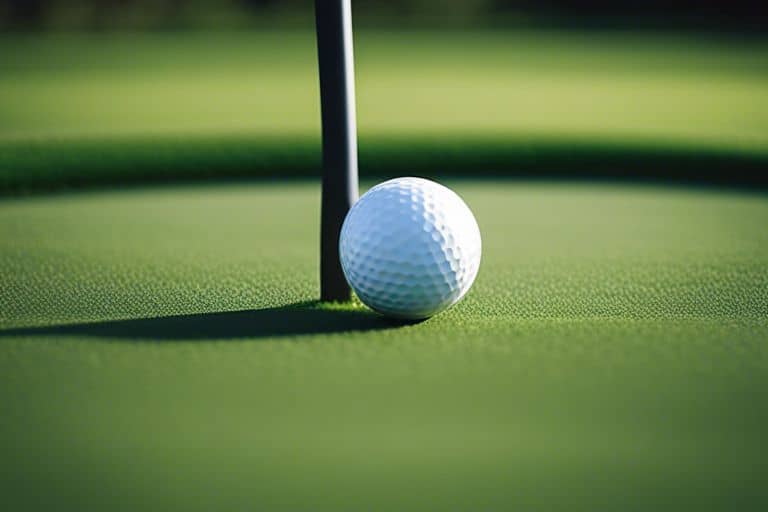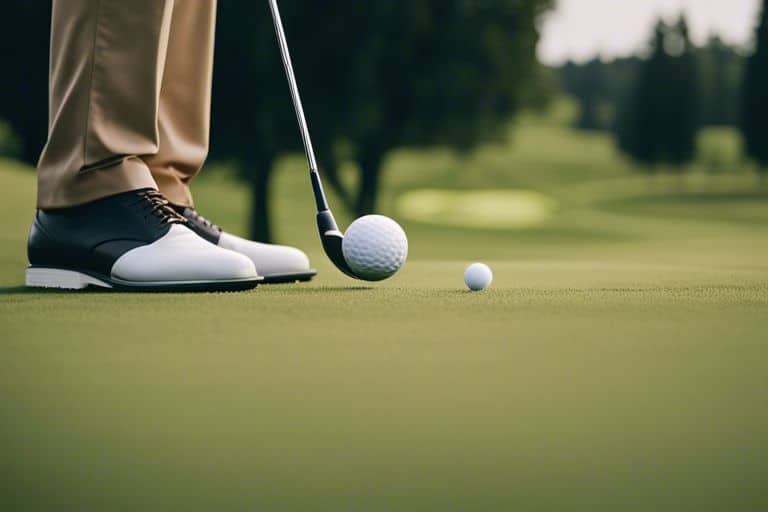How do you hit a "low draw and hold" shot in golf?
As a seasoned golf player, I have mastered the art of hitting a “low draw and hold” shot, and I’m here to share my expertise with you. When the situation calls for a shot that travels low, curves to the left (for a right-handed player), and stops quickly upon landing, precision and skill are essential. To achieve this shot, correct club selection, stance, and swing technique are crucial. In this blog post, I will walk you through the step-by-step process to successfully execute this challenging but rewarding shot in golf.
Fundamentals of the Golf Swing
By understanding and practicing the fundamentals of the golf swing, you can improve your ability to hit a “low draw and hold” shot. The right grip, stance, and swing mechanics are essential for achieving the control and trajectory needed for this particular shot. Let’s dive into the specifics of these fundamental aspects of the golf swing.
Grip and Stance for Optimal Control
When it comes to hitting a “low draw and hold” shot, the grip and stance are crucial for optimal control. The grip should be firm but not too tight, with the club positioned diagonally across the fingers of your left hand (for right-handed golfers). The V formed by your thumb and index finger should point towards your right shoulder.
Your right hand should then grip the club so that the V formed by your thumb and index finger also points towards your right shoulder. This neutral grip allows for greater control and manipulation of the clubface through impact. As for stance, your feet should be shoulder-width apart, with slightly more weight on your right side (for right-handed golfers) to encourage a downward strike on the ball.
Your body should be aligned slightly to the right of the target, with your clubface aiming at the intended target. This setup helps you better control the clubface and the direction of your shot.
Swing Mechanics for a Low Trajectory
Now, let’s talk about the swing mechanics that contribute to a low trajectory. To hit a “low draw and hold” shot, it’s important to control the clubface and path. As you swing, focus on delivering the clubhead from the inside of the target line and closing the face slightly through impact. This promotes a right-to-left spin on the ball, resulting in the desired draw.
Additionally, maintaining a smooth, controlled tempo is crucial for achieving the low trajectory. Rushing the swing can lead to a loss of control and a higher ball flight. Instead, focus on a smooth transition from backswing to downswing, allowing for a more controlled and powerful impact on the ball. By incorporating these swing mechanics into your game, you can improve your ability to hit a “low draw and hold” shot with greater precision and consistency.

Techniques for the Low Draw
Assuming you’ve already mastered the basic golf swing, hitting a low draw shot requires a few specific techniques and adjustments to your swing. In this chapter, I will walk you through the key elements of successfully executing a low draw shot on the golf course. By the end of this chapter, you should have a clear understanding of how to hit a low draw and hold shot in golf.
Club Selection and Ball Positioning
When attempting to hit a low draw, club selection and ball positioning play a crucial role in the outcome of your shot. I recommend using a mid-iron, such as a 6 or 7 iron, for better control and distance. Additionally, placing the ball slightly farther back in your stance, closer to the right foot for right-handed golfers, will help promote a lower ball flight and encourage the draw spin.
Executing the Draw: Path and Face Angle
One of the most important aspects of hitting a low draw shot is understanding the path and face angle of your club at impact. To achieve a low draw, start by aligning your body and clubface slightly to the right of your target. As you swing through the ball, focus on delivering an inside-out swing path while ensuring that the clubface is slightly closed. This combination of path and face angle will encourage the ball to start to the right and curve back towards the target in a controlled low draw trajectory.

Holding the Shot
Now that we have discussed how to hit a low draw shot in golf, let’s talk about holding the shot. Holding the shot refers to controlling the trajectory and spin of the ball so that it lands softly on the green without rolling too much.
Controlling Spin and Landing
When it comes to holding a low draw shot, controlling the spin of the ball is crucial. To achieve the desired spin, I focus on making clean contact with the ball and ensuring that my clubface is square at impact. Additionally, I adjust my stance and grip to optimize the spin and landing angle. By doing so, I can ensure that the ball lands softly and stops quickly upon hitting the green.
Practice Drills for Consistency and Precision
To improve my ability to hold a low draw shot consistently, I incorporate specific practice drills into my routine. One effective drill involves placing targets at varying distances and practicing hitting low draw shots to each target. By consistently hitting the targets, I can refine my precision and ensure that I am able to hold the shot in different situations on the golf course. Additionally, practice drills help me build muscle memory, allowing me to execute the shot with confidence and consistency during a round.
In summary, mastering the technique of holding a low draw shot in golf requires a combination of skill, precision, and practice. By focusing on controlling the spin and landing angle of the ball, and incorporating targeted practice drills into your routine, you can improve your ability to hold the shot with confidence and consistency. Don’t be afraid to experiment and find what works best for you, and remember to stay strong and focused throughout the process.
Course Management with the Low Draw and Hold
However, hitting a low draw and hold shot in golf is not just about executing the shot on the course. It also involves strategic decision-making and course management to maximize the advantages of this specific shot. Knowing when and where to use the low draw and hold can make a significant difference in your overall performance on the course.
Strategic Use in Different Weather Conditions
When it comes to different weather conditions, the low draw and hold shot can be a game-changer. In windy conditions, this shot can help you keep the ball low and counter the effects of the wind, allowing you to maintain control and accuracy. On the other hand, in wet or rainy weather, the low draw and hold can prevent the ball from getting caught up in the air, helping it travel farther and minimizing the impact of the weather on your shot.
Choosing the Right Moments for Maximum Advantage
It’s crucial to recognize the opportunities where the low draw and hold shot can give you the maximum advantage. For instance, on a tight fairway with trees or obstacles on both sides, this shot can allow you to keep the ball under the branches and in play. Additionally, on dogleg holes, utilizing the low draw and hold can help you position the ball for a clear and favorable approach shot to the green, reducing the risk of landing in trouble.
As you navigate the course, keeping these strategic considerations in mind and taking advantage of the low draw and hold shot in the right moments can give you a competitive edge, turning potentially hazardous situations into positive outcomes and ultimately improving your overall performance.
Conclusion
Ultimately, mastering the technique of hitting a “low draw and hold” shot in golf requires practice, skill, and understanding of the fundamentals of the game. By making the necessary adjustments to your stance, club selection, and swing path, you can effectively execute this shot with confidence and precision. Remember to stay engaged with your body positioning, control the clubface, and maintain a smooth follow-through to achieve the desired result. With determination and dedication, I am confident that you can successfully add this shot to your repertoire and improve your overall golf game.






